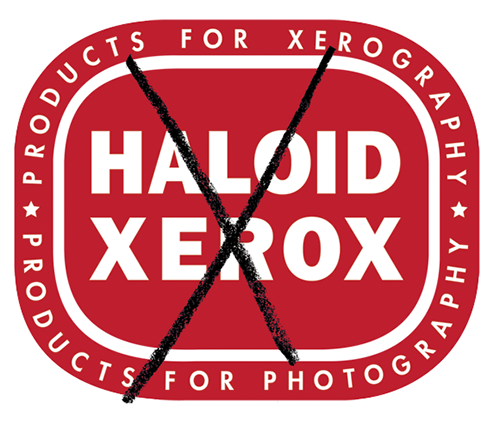
SO WHEN THE FTC CHARGED THAT OUR TV COMMERCIAL SHOWING A LITTLE GIRL MAKING A XEROX COPY WAS A HOAX, WE RE-SHOT THE SPOT...WITH A CHIMPANZEE.
The process of xerography was conceived in 1938 by Chester Carlson, who made his momentous discovery in solitude and offered it to more than 20 major corporations, among them IBM, General Electric, Eastman Kodak and RCA. The Abominable No-Men of Corporate America turned him down flat, passing up the opportunity to produce what Fortune magazine would describe as “the most successful product ever manufactured in America.”
Carlson finally made a deal with the Haloid Company, an obscure photographic-supply company, and produced the Haloid Xerox 914, a seemingly miraculous machine that made sharp, permanent copies on ordinary paper. In the early sixties, if you mentioned “office copying” or “duplicating,” the picture that came to mind was a shlocky back-room where a kid in white socks splattered ink. In 1960, at my new-born ad agency, Papert Koenig Lois, I told my new client, the head of Haloid-Xerox (we convinced him to change the name to Xerox a few days later), that we could make his incredible new product famous and prestigious overnight if he would allow us to do a classy demonstration on television. He lectured me on his product’s minimal ad requirements–ads in trade magazines (certainly not commercials) aimed at a mere 5000 purchasing agents–and threw us out of his Rochester office.
The next morning, he reflected and told us to go ahead. Our very first commercial showed a little girl visiting her father’s office, where she runs off a Xerox copy for him. His reaction, “Which one is the original?” The message was crystal clear: Even a child could operate a Xerox 914. But the day after it ran, A. B. Dick (a company aptly named) insisted our demonstration was a hoax, and the Federal Trade Commission ordered us to can the spot. So we immediately scheduled a new shoot and invited the perplexed FTC investigators to bear witness. Only this time, we cast a chimpanzee (who made the copies with a lot less coaching than the little girl required). The chimp lifted the Xerox pad, slipped the original in place, jabbed the correct buttons, and scratched his armpits while the Xerox 914 clicked out a copy. He grabbed it, waddled back to the same actor who had played the little girl’s father, and scampered away for his banana.
That week, on a CBS network news show, we ran the little-girl spot, followed at the next newsbreak by our outrageous chimp commercial–and America went ape for Xerox. Its ten-year sales objectives were accomplished in six months, and the Xerox culture was born! Today, the world makes two trillion copies a year based on xerography–made famous by the grandson of Cheetah the Chimp.
GEORGE LOIS
